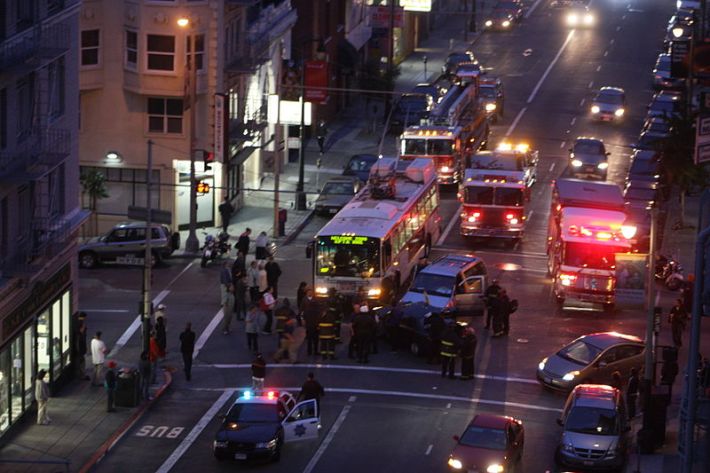
Gyro-meters and accelerometers are circuits inside your cell phone that detect movement. It is part of how the phone helps you navigate and how the screen stays oriented. But it may also work to identify how harshly a driver is swerving, braking, and accelerating.
Last week Uber announced it is launching a pilot program to see if it's feasible to use this technology to double check the ratings of its drivers. “If the rating is low, we ask why. It might be that a driver is unhappy about an unruly rider. Or a rider is worried that her driver was going too fast,” wrote Joe Sullivan, Chief Security Officer on Uber's blog. “Either way, we need to check what actually happened...increasingly technology can help get to the truth.”
Uber is hoping they can eventually use the data to pro-actively determine if a driver is consistently accelerating and braking too hard or speeding.
But that leads to a second, more intriguing possibility—if this all works, couldn't it open the way for monitoring all drivers? “Things are still in pilot phase,” explained Laura Zapata, a spokeswoman for Uber, who met with Streetsblog at their headquarters on Market Street. It is “definitely a big step that could be key for Vision Zero goals." If Uber's engineers can figure out how to use this data to identify habitual speeding and other reckless driving habits, and any legal hurdles can be overcome, there could be a future app that can be used by insurance companies and law enforcement.
There is already precedent. State Farm, for example, has its "Drive Safe & Save" usage-based insurance program. It tracks miles driven, speed, how often and how hard brakes are applied, and time of day/days per week a car is driven to apply a discount to the customer’s premium, explained Sevag Sarkissian, a representative for State Farm in the Bay Area, although he points out that it's not legal to use all of that data in California. Janet Ruiz, the California representative for the Insurance Information Institute, told Streetsblog that many insurance companies offer a device one can plug into their car that judges how abruptly a driver stops and starts. But Uber's project, she said, may be the first time a company is looking at a potentially universal way to track driver behavior in real time.
“I think we are heading into an age where rather than just collecting data from the past, we can collect data for individuals that gives people an incentive to drive safe and be rewarded for it,” said Ruiz. “I think that's a good thing.”
There is also the possibility that law enforcement could use this technology to track speeders and reckless drivers, instead of just patrolling and setting up speed traps. “Technology can most definitely be used to support safe driving,” said Nicole Ferrara, Executive Director of Walk SF. And while she's intrigued by the possibilities, she's not letting Uber off the hook. “Uber has put countless new cars driven by untrained, distracted drivers on the road in San Francisco. Data shows that these cars are not replacing single occupancy vehicle trips--they're replacing active transportation trips like walking, biking and transit. Each of these new vehicle trips introduces a new opportunity for a crash.”
Certainly, Streetsblog has asked the question as to whether car-hailing services such as Uber and Lyft help or hinder efforts to make safer, less congested streets. If nothing else, it's a factor in reducing car ownership—which means less land is used for car storage.
And then there's the scary George Orwell, 1984, privacy factor of having a big company or the government looking over your shoulder as you drive. As it is, there's the disturbing possibility that gyro-meters can be used to bypass a smart phone's microphone security to eavesdrop on conversations. But if there is an opportunity here to get law enforcement right on the trail of speeders, or at least to allow insurers to charge people for driving dangerously, why not do it?
“I'm intrigued by their new focus on traffic safety, but skeptical considering their business model contradicts some core principles of Vision Zero,” complained Ferrara of Uber's work. “And they use the term 'accident,' though we know crashes are quite the opposite--they're predictable and preventable.”
Uber's post refers to speeding as a root cause of “accidents.” It is also rather glib: “...we could use technology to determine that the average South Florida Uber driver goes 50MPH and takes 50 minutes to drive from Miami to Fort Lauderdale. For drivers who go much faster on that stretch, we can ask them to curb their enthusiasm [emphasis added].” Perhaps Uber should consider changing their policies and replacing that last phrase with: “they will be immediately banned from driving for our company.”
Any technology that can help stop reckless drivers before they kill and maim is worth pursuing, but it also requires attitudes and policies that treat it as a deadly problem and not just an undesirable quirk.




